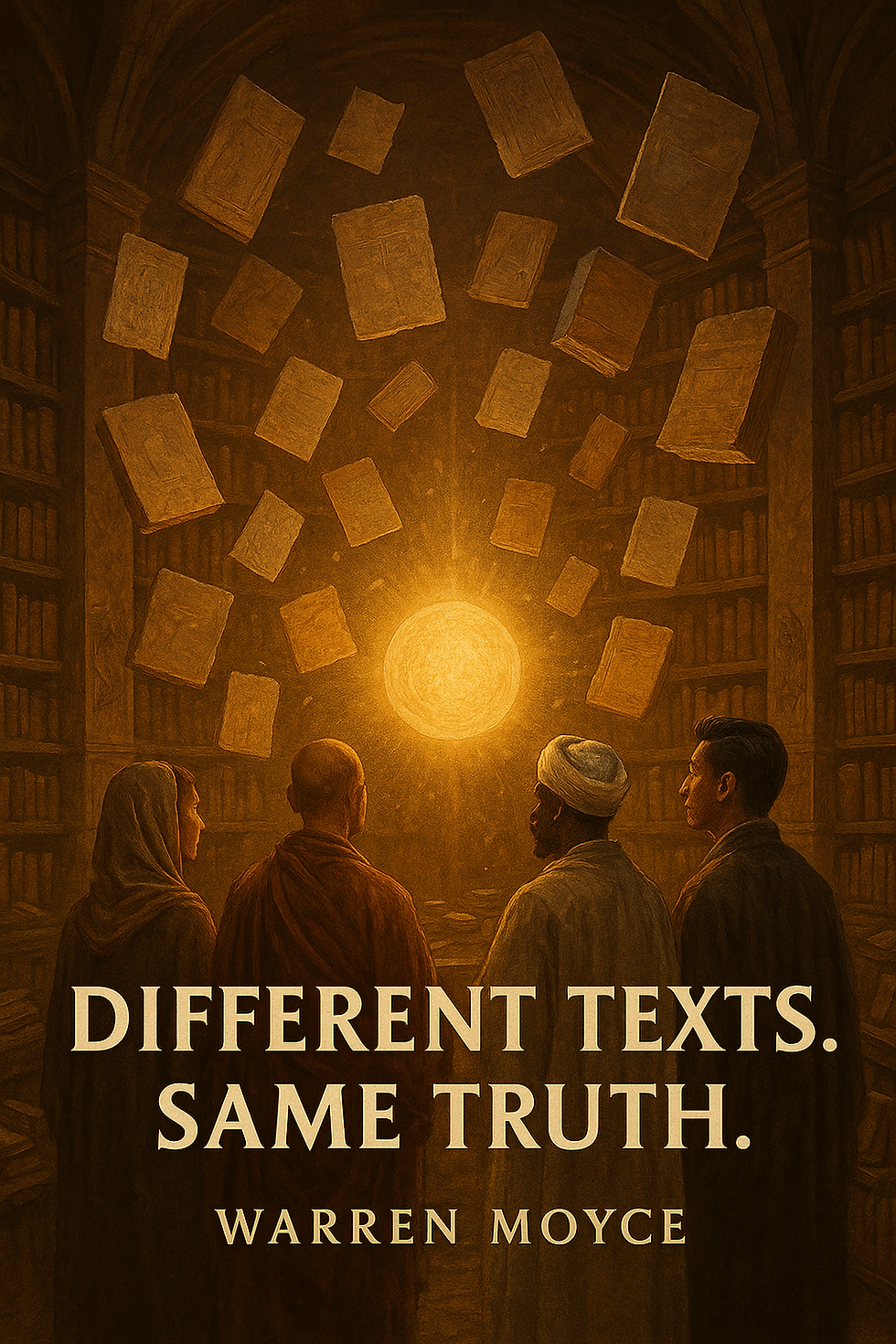What All Sacred Texts Share
- Warren

- Aug 9
- 3 min read
Throughout time, people have turned to sacred texts in their search for truth, purpose, and understanding. These writings come from many cultures and speak in different voices. The Bible, the Quran, the Vedas, the Tao Te Ching, the Kybalion, the Upanishads, and others each offer unique teachings. Beneath their differences, they reflect a common human longing.
They answer the same questions. Who are we? Why are we here? What lies beyond this life?
These are the truths that most sacred texts consistently reveal.

1. A Higher Source Exists
Each tradition begins with the recognition of a greater presence. Some call it God. Others describe it as the All, Brahman, Allah, the Tao, or Great Spirit. Some traditions describe this source as personal, others as formless and infinite. All agree that something higher holds everything together.
2. All Things Are Connected
The idea of unity appears in nearly every sacred text. The Kybalion teaches the principle of correspondence. The Bible describes all creation as emerging from one breath. Hinduism describes every soul as a spark of the same divine source. There is no true separation between us and the universe.
3. The Journey Begins Within
Personal transformation is at the heart of all spiritual growth. The Bhagavad Gita teaches self-mastery. The Bible speaks of renewing the inner being. Buddhism teaches the stillness of mind as the path to awakening. The Kybalion reveals that mental alignment is key to spiritual power. All agree that the path forward begins by looking inward.
4. Universal Laws Govern Life
Sacred texts often reveal a deeper order. These are described as commandments, dharma, natural law, or Hermetic principles. These truths are not imposed from outside. They reflect the way the universe works. Living in alignment with these principles brings peace, balance, and clarity.
5. The Soul Is Eternal
Human beings are more than their physical bodies. Sacred texts affirm the soul’s continuation beyond death. The body may return to the earth. The soul returns to its source, or begins again. Some speak of heaven. Others speak of rebirth or liberation. The journey does not end with death.
6. Our Actions Shape Our Reality
Every tradition teaches that actions carry weight. Karma, justice, divine judgment, and moral cause and effect all point to the same truth. Life reflects the choices we make. Each word, thought, and deed sends ripples into the world and into the future.
7. Love Is the Highest Power
Love stands at the center of all sacred teachings. Christianity teaches that love fulfills all laws. Islam describes divine mercy as endless. Hinduism speaks of devotion to the divine through love. Buddhism teaches compassion as the path to liberation. Love heals, restores, and elevates. Love is not a feeling. It is the highest law.
8. The Journey Is Both Individual and Shared
Spiritual growth is personal, yet no one walks alone. Sacred texts encourage reflection, meditation, and prayer. They also call for kindness, forgiveness, and service. How we treat others reflects how far we have come. Growth involves both the soul and the world around it.
Final Reflection
The sacred texts of the world may seem different. They were written in different times, using different languages and metaphors. Still, their truths echo each other. They speak of one source, one humanity, one path of transformation.
Truth wears many faces. Its essence remains unchanged.








Comments